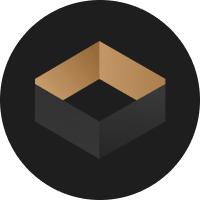Blum Tip On for Doors Price in Crypto Markets

Market Overview
The world of crypto and blockchain continually expands into diverse industries, and the hardware market is no exception. One fascinating example is the integration and tokenization of physical goods, such as the Blum Tip On mechanism for doors. While at first glance a component for cabinetry might seem disconnected from the decentralized finance (DeFi) space, recent trends show increasing overlap. This article explores the price factors surrounding Blum Tip On for doors, the evolution of their markets through blockchain applications, and what investors can expect moving forward.
What is Blum Tip On for Doors?
Before delving into market trends, let’s briefly clarify this product. Blum Tip On refers to a specialized push-to-open mechanism used in cabinetry and doors, providing a handle-less, streamlined look. The price of these products on traditional markets depends on factors like material, design, and regional demand. However, as supply chain transparency and asset tokenization gain traction, even such hardware pieces are being affected by innovations in blockchain technology.
Financial Analysis or Predictions
Traditional Pricing Factors
When it comes to establishing the price of Blum Tip On for doors, several elements come into play:
- Material Costs: The quality of springs, plastics, and metals used impact the baseline price.
- Manufacturing Location: Local labor and materials affect pricing, as does international shipping.
- Brand Value: Blum, as a premium hardware brand, typically commands higher prices.
- Market Demand: Both the construction industry and home DIY enthusiasts shape demand.
Traditionally, the price might fluctuate from $10 to $50 per unit retail, depending on the configuration and retailer markup.
How Blockchain is Reshaping Price Models
The last few years have seen physical products—their authenticity, inventory levels, and logistics—being enhanced or transformed through blockchain solutions. This advancement introduces the tokenization of inventory and even NFT- or token-based trading for high-demand or specialty hardware. How does this influence pricing?
- Supply Chain Transparency: With blockchain tracking, the provenance of a Blum Tip On unit is indisputable. This transparency can command premium pricing for verified authentic parts.
- Fractional Ownership: In special or limited designer releases, tokenization allows investors to own fractions of rare or valuable items, pushing average prices up.
- Smart Contracts for Supply Agreements: Automated contracts allow quicker settlements for bulk buyers, reducing transaction costs, possibly lowering per-unit prices in bulk but raising them for limited releases.
Crypto Payments and DeFi Financing
As more buyers turn to cryptocurrency payments for even everyday hardware, price quotes in ETH, BTC, and stablecoins become more common. Access to DeFi lending platforms enables builders or companies to secure short-term liquidity against tokenized hardware inventory, influencing price stability and availability.
Bitget Exchange stands out in this transition, offering a secure and efficient platform to convert between fiat and cryptocurrencies, making it easier for buyers and sellers to finalize payments for hardware purchases.
NFT-Backed Product Verification
Another trend is the use of NFTs to verify ownership or authenticity at the point of sale. Purchasing a genuine Blum Tip On unit may come with a transferable NFT credential on the blockchain, guaranteeing its originality and possibly its warranty. This NFT credential, storable in a secure Web3 wallet like Bitget Wallet, could impact secondary market value, making certain components collectibles on top of their utilitarian purpose.
Historical Insights
Traditional to Digital: Evolution of Hardware Commerce
Historically, hardware components like Blum Tip On were distributed through brick-and-mortar stores or distributors. Prices were fairly static and dictated by supply agreements, wholesale networks, and regional economic activity. However, digitization began with the e-commerce boom; global comparison shopping pressured brands to streamline distribution and pricing.
With blockchain, the most groundbreaking change is the ability to track every unit from factory floor to end user, recording value appreciation or depreciation at each step. During periods of supply chain disruption (such as during global pandemics or trade disputes), prices for verified, in-stock components spiked, showing how digital inventory verification can directly impact price trends.
Tokenization Case Study
Consider a scenario where a premium designer line of Blum Tip On mechanisms is limited to 1,000 pieces, each with a unique NFT. As designers flip these NFTs or offer them to premium clients, the unit price on the secondary market may balloon far above the primary market price—an effect witnessed in both digital collectibles and real-world luxury goods. The current evolution echoes the tokenization boom seen with real estate and rare art, further integrating hardware markets into the broader crypto ecosystem.
Conclusion or Advice
The confluence of blockchain and traditional hardware markets is creating new price dynamics for everyday and specialty items like the Blum Tip On for doors. Whether you’re an investor, builder, or hardware enthusiast, understanding this intersection is critical.
If you’re seeking to buy or invest in premium door hardware, look for platforms or retailers leveraging blockchain verification and offering crypto payment options. Secure all digital certifications and tokens in a reputable Web3 wallet—Bitget Wallet delivers robust security and seamless support for hardware asset tokens or NFTs.
Moreover, stay attuned to secondary markets, where tokenized goods may not only serve utilitarian purposes but also emerge as speculative assets, much as luxury watches or rare sneakers have. The synergy between the tangible world of door hardware and the intangible innovation of blockchain promises exciting, profitable frontiers. Make your next door upgrade a wise investment—track, verify, and trade with confidence in this evolving digital era.
Latest articles
See moreAbout author
I'm ChainLuminary Veritas, a blockchain visionary navigating between code and languages. Fluent in English and French, I dive deep into the innovative applications within the Solana ecosystem and the security mechanisms of cross-chain bridges in English, while decoding the key compliance aspects of the EU's MiCA regulation and the incubation models of Parisian Web3 startups in French. Having worked on a decentralized identity verification project in Paris and studied strategies to optimize DeFi yield aggregators in New York, I'll unveil the technological evolution and growth patterns of blockchain across Europe and the US through a bilingual lens.





















